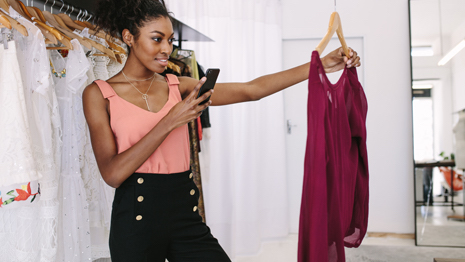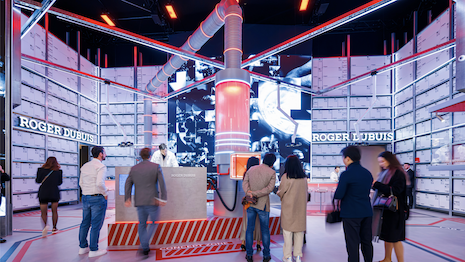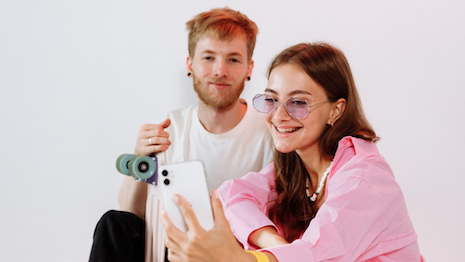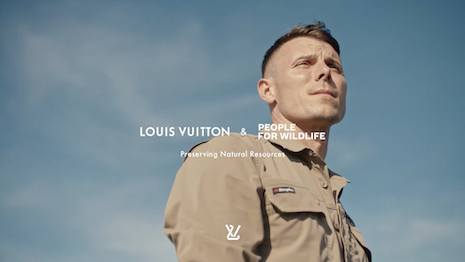 The overall state of the sector was the focus of the Women in Luxury 2023 virtual panel, held on April 27. Image credit: Avery Dennison
The overall state of the sector was the focus of the Women in Luxury 2023 virtual panel, held on April 27. Image credit: Avery Dennison
Following the height of the global health crisis, consumers are coming back together with the expectation that brands reflect this renewed focus on connection.
As part of Women in Luxury 2023 programming, Luxury Daily hosted a marketer, researcher and entrepreneur for a remote conversation on the purchasing behavior and evolving preferences of female customers. Each a leader in her respective field, panelists detailed the lasting importance of online storytelling and offline, sensory-focused efforts on the part of high-end brands during a segment entitled “State of Affluent Women Consumers.”
“Luxury did so well in the United States and in North America in the last three years during [COVID-19], and I would argue that’s because luxury is the most experiential of all the categories,” said Marie Driscoll, managing director of luxury and retail at Coresight Research, New York.
“During a time when we were isolated and weren’t meeting with people, luxury was a way for everybody to have an experience of sorts.”
The April 27 Women in Luxury 2023 digital conference was moderated by Mickey Alam Khan, editor in chief of Luxury Daily, New York.
Evaluating consumer values
The pandemic changed the way people spent their money, but in many ways, it caused a return to traditional habits.
As young people gained the spending power to participate in luxury, they brought with them their strong sense of self and taste for customized digital spaces. Simultaneously, core customers doubled down on their desire for a timeless, tactile shopping experience – this went hand in hand with the youthful push for immersive personalization.
 Global events such as Watches and Wonders have been embracing installations and pop-up offerings in a push to appease consumers of all ages who want engaging interactions with brands. Image courtesy of Watches and Wonders Geneva
Global events such as Watches and Wonders have been embracing installations and pop-up offerings in a push to appease consumers of all ages who want engaging interactions with brands. Image courtesy of Watches and Wonders Geneva
During the hour-long session, Julie Faupel, founder and CEO of REALM Global, and Tracey Baldwin, senior vice president of luxury lifestyle at The Wall Street Journal joined Ms. Driscoll in discussion.
“That core customer was just immune to the volatility of the economy in the last 12 or 18 months,” Ms. Baldwin said.
“And, I would say the pent-up demand for luxury goods was really there, and people just needed to feel better,” she said. “The other thing that we see and that marketers are really capitalizing on is things that stand the test of time.
“Consumers are willing to invest in things that last; things that hold their value.”
As items such as jewelry and watches appreciate over time, Ms. Baldwin pointed to the sector’s success even in trying economic times. For this reason, investment pieces tend to be one of the few buys that transverse revenue brackets amidst luxury consumers.
Young people are behind the rise of another sector’s resilience, both because of their personal values and their spending power’s contingency on the strength of the market.
 While Gen Z and other young consumers do not typically have the same buffer from market downfalls that senior spenders do, they continue to contribute to luxury's performance. Image credit: FreedromPay
While Gen Z and other young consumers do not typically have the same buffer from market downfalls that senior spenders do, they continue to contribute to luxury's performance. Image credit: FreedromPay
“A new consumer [is] entering luxury,” Ms. Driscoll said.
“I think a lot of younger generations are approaching luxury by resale,” she said. “It’s often their first point of touch with a luxury brand.
“So I think increasingly we’re going to see resale as a part of the luxury brands’ overall position in the market.”
When buying new or used luxury goods (see story), consumers across generations are wanting brands that reflect their beliefs back to them. The panelists contributed this desire in part to a renewed push toward storytelling.
Ms. Faupel related this to the new trends emerging in luxury hospitality and real estate.
“The storytelling element is coming back in,” she said.
“Every room should tell the story of your family or of your life, and I think we’re seeing a lot more of that.”
These same consumers want brands to communicate the story of their people and their citizenship efforts, both for the planet and humanitarian causes.
 Brands like Louis Vuitton are increasingly bringing their environmental efforts forward, centralizing the scientists and activists behind them. Image credit: Louis Vuitton
Brands like Louis Vuitton are increasingly bringing their environmental efforts forward, centralizing the scientists and activists behind them. Image credit: Louis Vuitton
“This is about a relationship versus a transaction,” Ms. Baldwin added.
“We expect brands to be good corporate citizens; good citizens within the community,” she said. “These are things that we never thought about or talked about in luxury.”
Supply chain transparency, sustainability efforts and diversity initiatives are all a part of this shift, and having conversations about these topics – online or in-store – with its consumer base is essential for the success of a brand in today’s market.
Face to face
The panelists agreed that in-person retail is an ideal place for brands to express themselves, as it is engaging and can build a sense of community, something that has become treasured since the pandemic began.
“When you look at the emphasis that has been developed through COVID, and kind of post-COVID as we’ve all emerged, it’s this idea of community building,” Ms. Faupel said.
“That is really a huge trend that will continue because people really want to feel like they belong,” she said. “As we see this generational shift in wealth, that will continue too because it’s something that really resonates with the millennials the ‘Z’s.’”
Later, Ms. Faupel went on to highlight the importance of unique experiences in brands’ journeys toward community-centric retail. Pop-ups, culinary additions to traditional shopping spaces and events are on the rise for this purpose.
“Boutique experiences are something that are drawing people out,” she said.
“It’s exciting, it’s different, and that’s what I see as a trend going forward – activating the people that you want to, but doing it in a collaborative way,” she continued. “Because at the end of the day, we’re all targeting the same affluent consumer.
“So rather than doing it in a highly bifurcated way, let’s do it in an educated, curated way that is fun and actually makes them excited to come and experience whatever it is that we’re selling.”